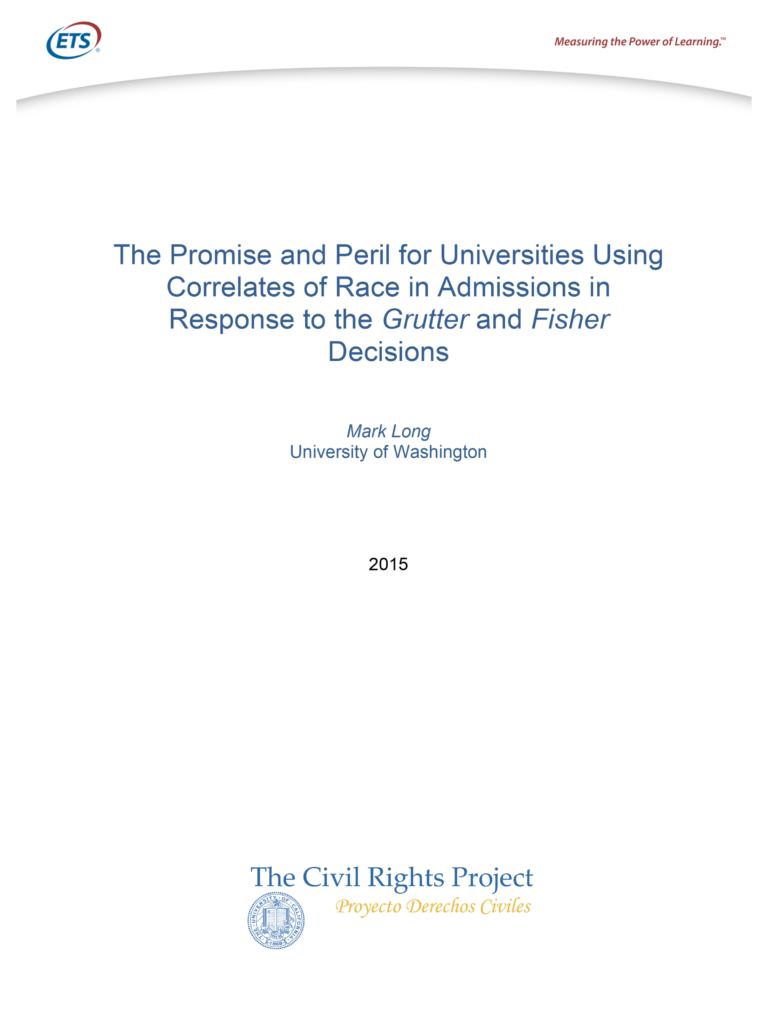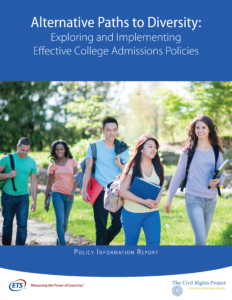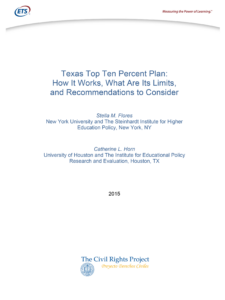Abstract
This paper examines using correlated indicators for a student’s race, rather than using the student’s actual race, in admission decisions for universities. The goal is to determine whether this method will permit universities to broaden admissions criteria to promote diversity without using race or ethnicity.
This brief and three others are the result of a collaboration between the Civil Rights Project and the Educational Testing Service, Strengthening Campus Diversity: How Do We Address This Important Issue? The four issue briefs discuss how college campuses can attempt to maintain and expand diversity within a legal framework.
The other three briefs are:
- “Two Decades After the Affirmative Action Ban: Evaluating the University of California’s Race-Neutral Efforts,” by William C. Kidder (UC Riverside) and Patricia Gándara (UCLA, CRP Co-director).
- “Can Socioeconomic Status Substitute for Race in Affirmative Action College Admissions Policies? Evidence From a Simulation Model,” by Sean F. Reardon (Stanford University), Rachel Baker (UC Riverside), Matt Kasman (Brookings Institution), Daniel Klasik (George Washington University), and Joseph B. Townsend (Stanford University).
- “Texas Top Ten Percent Plan: How It Works, What Are Its Limits, and Recommendations to Consider,” by Stella M. Flores (New York University) and Catherine L. Horn (University of Houston).
In compliance with the UC Open Access Policy, this report has been made available on eScholarship:





